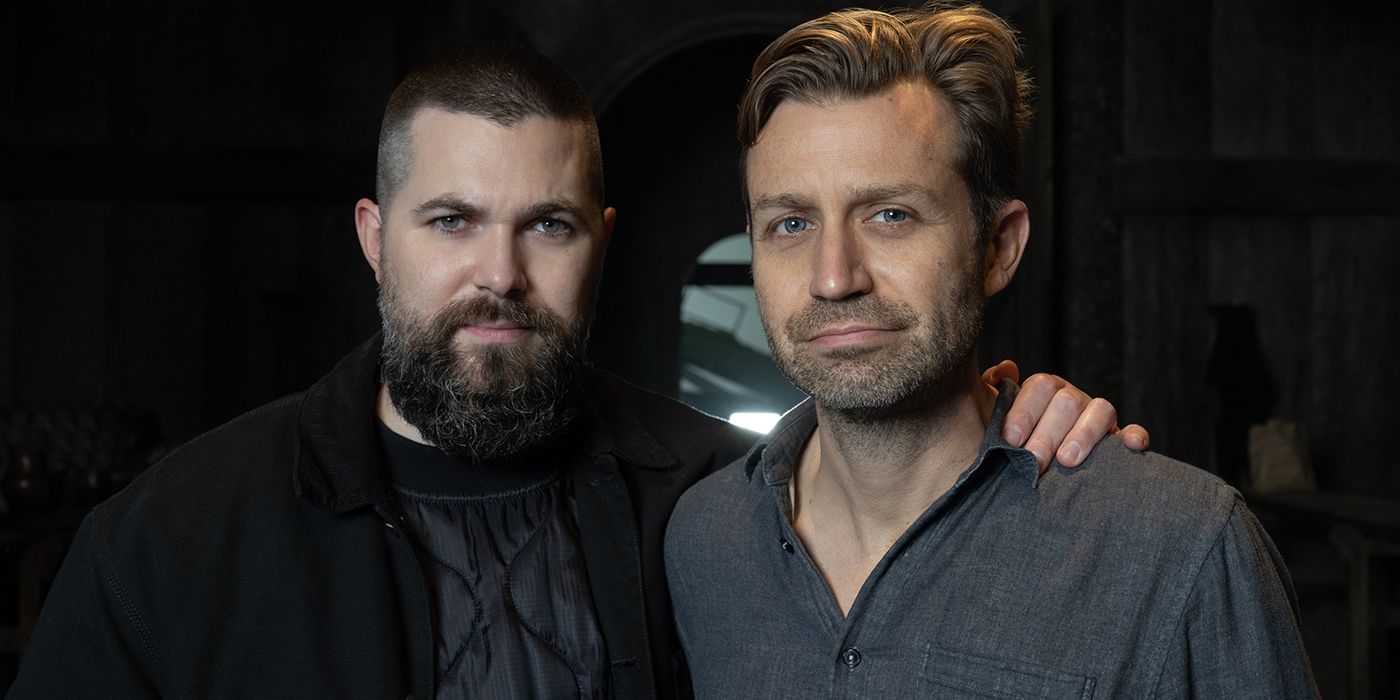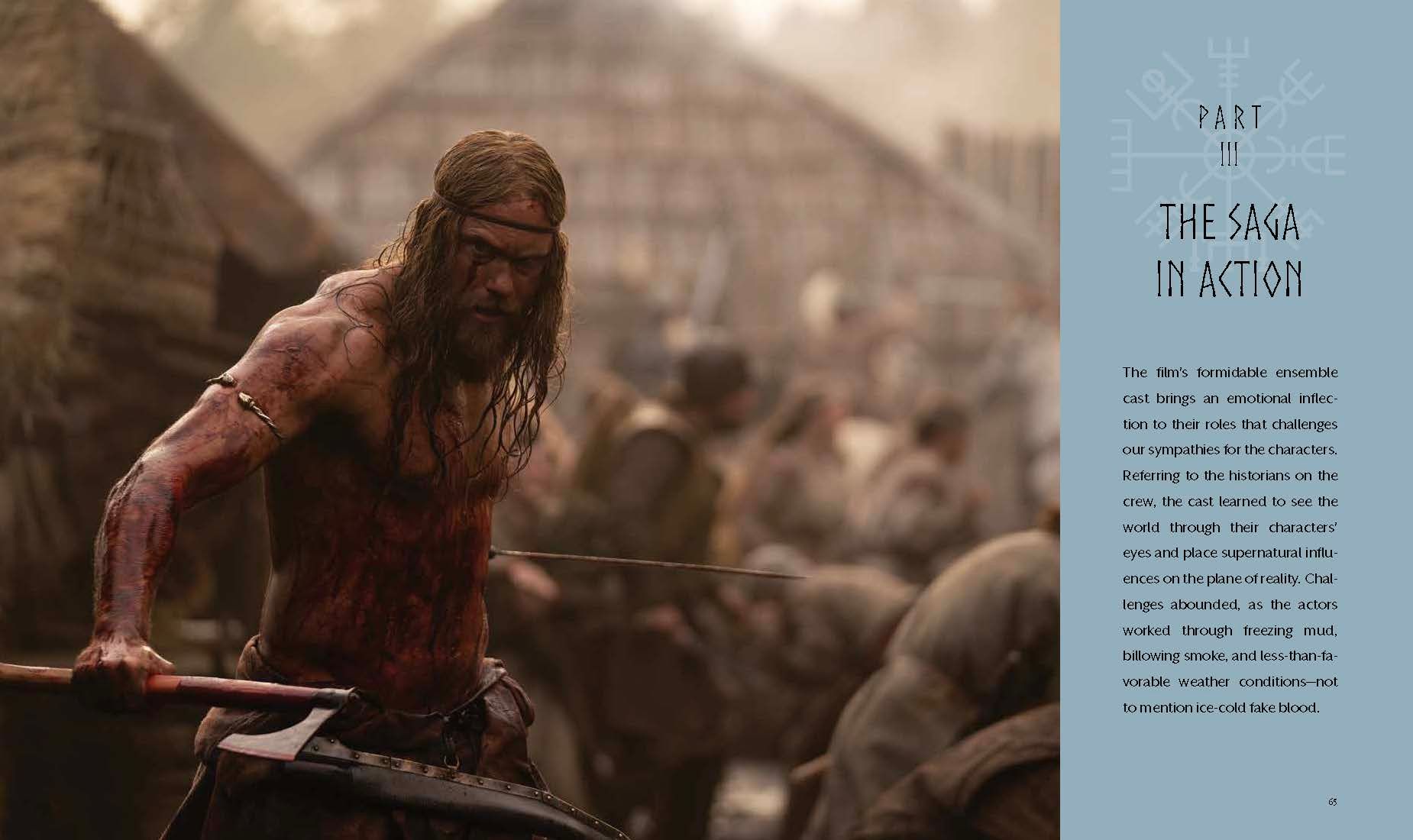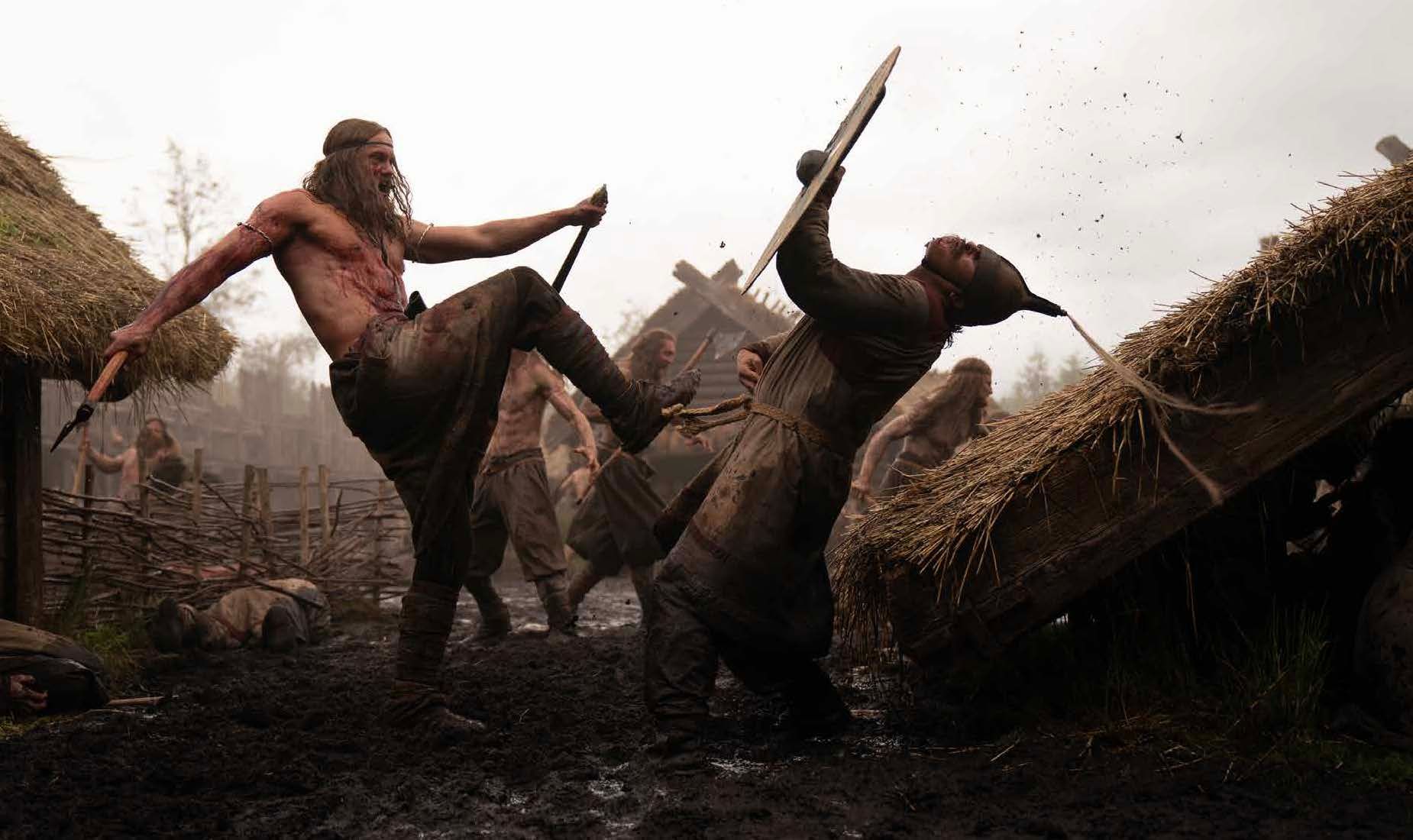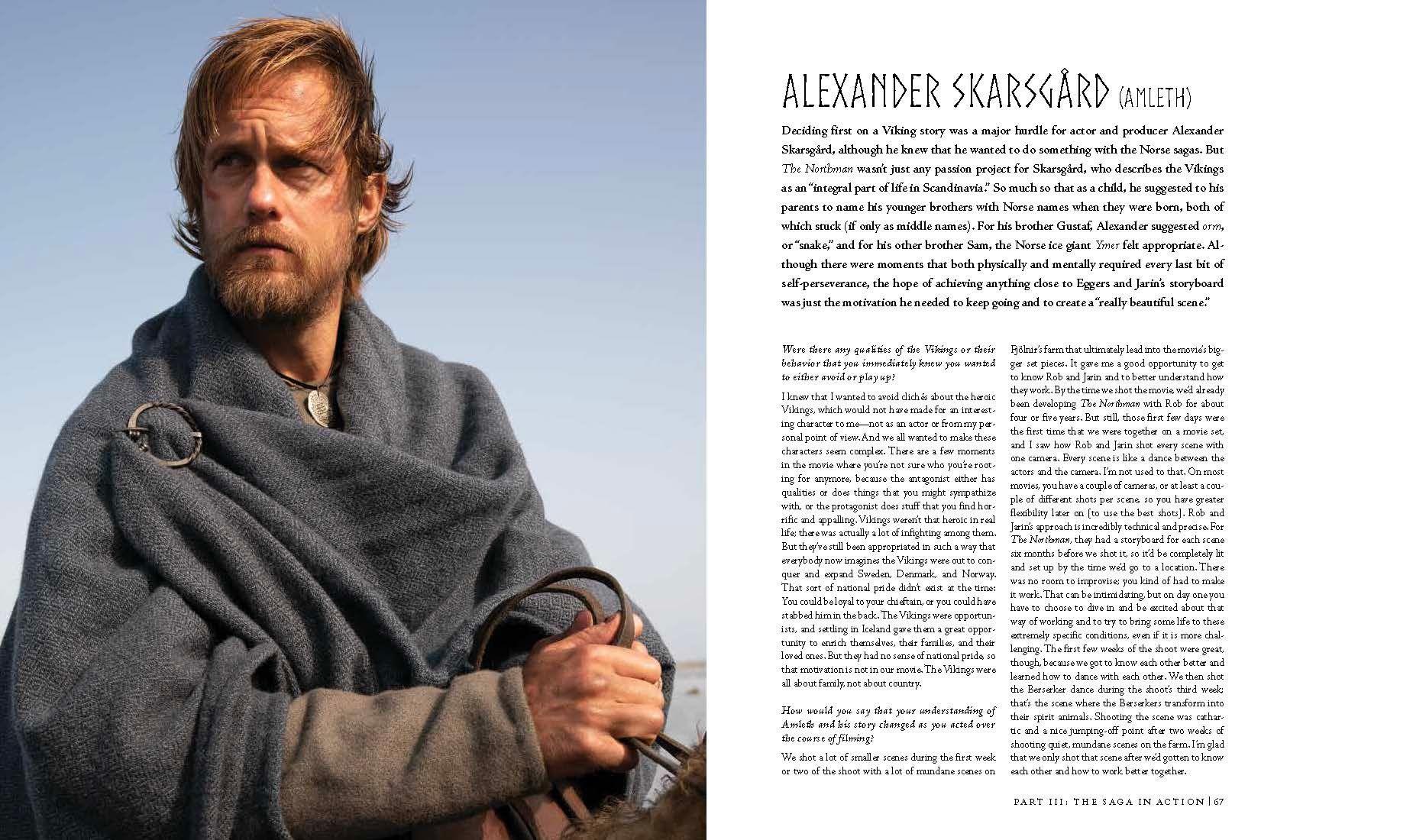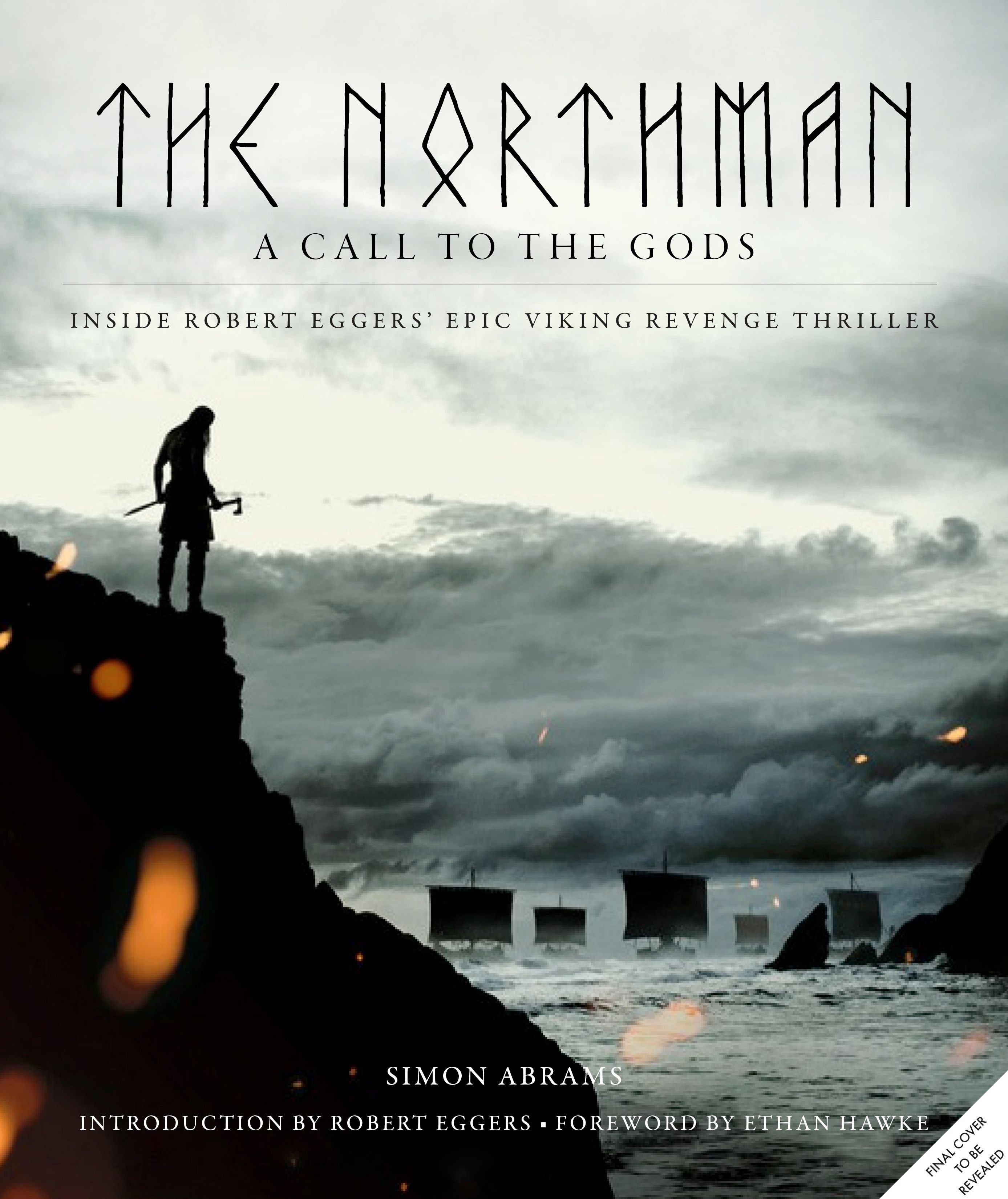Robert Eggers made his grand return to the big screen with The Northman, a Viking epic with ties to Shakespeare's Hamlet that broke expectations and astounded audiences with its take on the cycle of vengeance. Viewers who fell in love with the attention to detail that went into the making of the bloody tale of Prince Amleth will be thrilled to note that The Northman: A Call to the Gods is coming their way in September 2022, and Screen Rant has an exclusive excerpt from the book.
The Northman: A Call to the Gods is the official look at how the Viking revenge thriller was created - from its conception to its production - by Eggers (highly acclaimed for his previous films The Witch and The Lighthouse). His most ambitious and high-budget project yet, The Northman is against the ruthless backdrop of tenth-century Norse territory and features an all-star cast including Alexander Skarsgård, Nicole Kidman, Ethan Hawke, Anya Taylor-Joy, Willem Dafoe, and Björk.
Screen Rant can exclusively reveal some of the artwork and page excerpts from The Northman: A Call to the Gods, which includes a lengthy and compelling interview with Eggers and cinematographer Jarin Blaschke, who was responsible for capturing the gorgeous and haunting images in the film. Read on for more:
An Excerpt From The Northman: A Call To The Gods
DIRECTOR ROBERT EGGERS AND CINEMATOGRAPHER JARIN BLASCHKE
Eggers has been working with cinematographer Jarin Blaschke since 2007, when the two collaborated on a short movie based on the Grimm brothers’ fairy tale “Hansel and Gretel.” Eggers was originally drawn to Blaschke because of his foreign-sounding last name, even though Blaschke was born in Westminster, California. Together, Eggers and Blaschke have applied their signature one-camera approach to all three of their feature collaborations. Most contemporary film productions—especially of this size—are filmed using multiple cameras per scene, both for coverage and safety, but Blaschke and Eggers’s singular results on The Witch and The Lighthouse suggested that their unconventional approach would also work for The Northman. Still, not being able to visit and plan around the film’s locations required a considerable amount of extra storyboarding and pre-planning.
You have talked about how, in general, the priority in your work is to reduce everything—camera movements, lighting, etc.—to its essential elements. How did you apply it to The Northman?
Robert: In most scenes that are one shot—and the majority of scenes are [taken in] one shot—a lot of the work that Jarin and I are doing together is rewriting the scene to remove unessential story beats and then reordering the remaining beats so that we can show everything we need to show in a single camera movement. In fact, we [filmed] a handful of small scenes that we [originally] planned on filming in two or three shots, but we got so used to doing one-rs, or long takes, that on the day of the shot we decided, “Let’s just shoot it as a one-r.”
Jarin: It would be a different movie if we did everything in three shots instead of one. There’s a lot of stuff happening in this movie, and it’s all action. Rob’s first email [to me] had a list of movie references. I remember he also mentioned [wanting] a lot of long takes with “a lot of shit going on” [with] lots of dense camera frames—really, it’s a lot of work over half a year (or more) just to line all that up in a logical way so that you can have deceptively simple shots.
Robert: We learned a lot making this movie. When we wrapped, Ethan Hawke put his arms around me and Jarin and said, “Congratulations, guys, you can now do anything that you want. You’ve done everything you can do in a movie except for car crashes, but you didn’t want to do that anyway, Rob.” As he left, Jarin and I turned to each other and thought, Yeah, now we’re able to make the movie we just made.
Jarin: You have to be ready to go too far to know where the right level is. If you’re not prepared to go too far, you’ll never know if you went far enough.
Robert: Not that this was some experiment in going too far. We made the movie we set out to make, but it was definitely extreme.
During interior scenes, there’s a lot of single-source lighting. Everything revolves around a large fireplace or hearth in a lot of your sets. How did you shoot in a cramped, dimly lit environment with fluid camera movements while also illuminating all the details you wanted to be seen?
Robert: One scene where single-source lighting really worked in our favor is in Queen Gudrún’s bedroom, when Amleth makes himself known to his mother and she tells him her backstory, which is not what he’s expecting. The fireplace is in front of her, so she’s front-lit when she first finds out who he is; she’s vulnerable. Then, as she starts to tell her story, she crosses the fire and she becomes underlit, like a Boris Karloff monster. She looks totally demonic. Then, when she’s trying to be seductive, she’s backlit and looks as beautiful as possible. That was really cool, though other scenes were more challenging.
Jarin: My tendency is to go for naturalism because that’s how my brain works. I don’t know how to do the studio standard of three-point lighting. I just don’t think of things that way. The Northman is also an unusual case. Normally, you have to ask questions like, What would the room have in it? [The answer is] usually a window, which is great, but Vikings didn’t have windows in their homes. You’d also normally be able to use something simple to light a room, like a lamp. You’d place that at the right spot or have a single window, but in this case there’s only a fire, [which is] always on the floor [and] always exactly in the middle of every frickin’ room. Period.
Robert: For scenes like the one in the hut where the female slaves sleep, which we discussed to no end, the fire in there was raging in order to get exposure on the people who are asleep in the scene, [and it looked] unrealistic. We used these massive lighting rigs that Jarin designed for an early scene in King Aurvandil’s Great Hall in Hrafnsey. They were later digitally replaced with plates of real fires. If the fire were that big with everyone wearing wool and fur, everyone would have died, but we needed to get exposure in there, so we used these lighting rigs.
Jarin: For the Great Hall scene, I think we had a lighting rig with ninety bulbs on one side, and ninety bulbs on the other. There were also sixty builds on another side, and sixty on the opposite side. That’s about three hundred bulbs to light this space. And we used 500-watt bulbs.
Robert: That was basically the only light source, too [laughing].
Robert mentioned that you were more inclined to use cranes and dollies, in general, and that a Steadicam camera was only reluctantly used to stabilize your camera’s movements for the Knattleikr game scene. Why do you generally prefer cranes and dollies?
Jarin: A director, or whoever is leading you through this experience, has to be a leader. You are in their hands, so they need to be ahead of you, not figuring it out with you. I don’t buy that visceral handheld camera approach to shooting action. I like to know that the filmmaker knows more than I do, rather than just being reactive. They should be telling you where to look, not just what I would look at if I stumbled on a crazy situation and couldn’t make heads or tails of it. That’s just my thing. There should be some intention behind what you’re looking at. Using a Steadicam makes me feel like I’m floating in space, so for a formally composed [film] like The Northman, using dollies and cranes felt right.
Robert: That is, it felt right to not use a Steadicam.
Jarin: Yes. Everything has its limits though, even cranes, which blow around in the wind. We learned a lot about cranes on this movie.
Robert: I definitely would say that whenever you can use a rigid crane, use a rigid crane. That would be my recommendation.
Did you prefer to use a rigid crane because of the wind and the bad weather during exterior scenes?
Robert: It’s fine to use a telescopic crane. They just tend to break down from the weather.
Jarin: A technocrane tends to blow over more because it’s not porous, like a conventional crane. The wind hits a rigid crane differently than a technocrane. It’s easier with a rigid crane because the wind doesn’t catch it as much, whereas a technocrane becomes a big, fat sail. On The Lighthouse, the first time we ever used the technocrane, which has a longer length than most cranes, we thought, Oh, technocrane, where have you been all our lives? We were able to climb around rocks and make the movie. But for The Northman, the wind created problems when we used technocranes.
Robert: Our [film] crew on The Northman had previously worked on [films such as] Star Wars, James Bond, Ridley Scott, etc., so we had a crew who was able to execute our crazy ideas. Jarin would come up with something, and they’d say, “We did something kind of like this on the third Harry Potter movie; maybe we could do this.” That was invaluable for us.
Jarin: Yeah, what a resource [the crew was], because it was all just theory for us. They were fully onboard to try to solve all of our problems.
Robert, you have said that you weren’t interested in doing a movie set in modern times. Jarin, do you feel the same way, given your mutual preference and interest in using only one camera at a time?
Robert: Jarin would be more interested in doing a contemporary movie. I have no interest.
Jarin: I don’t know what it is, but I’ve always been obsessed with other places, other times. I guess, for me, filmmaking is learning about what’s not directly at hand. It should give you a sense of discovery. It’s hard to articulate, but if I made nothing but period films, I’d be happy, for sure. Maybe I’m an escapist at heart. When you film a movie in a contemporary setting, it’s almost like there are so many light sources; everything’s so noisy and so complex. Just give me a room with a window, the seasons of the year, the times of day, and different weather. That is more than enough variety for me. I would love to just go deep and perfect that. It can be overwhelming when you throw in all the clutter and all the mess that we have now. I try to do less things as well as I can.
Robert: I just don’t have any interest in making a contemporary movie. To me, it’s fun to re-create a world. Choosing wallpaper samples for a contemporary thing just sounds awful. The idea of having to shoot a cell phone . . .
Jarin: It’s depressing.
Robert: Yeah. The idea of photographing a car is pretty bad, but having to shoot a cell phone . . .
Jarin: Or seeing people typing out emails?
Robert: I’m interested in the stories that I’m interested in telling more than I’m interested in being a filmmaker. I would rather write a book or paint a painting about something that I am into than make a contemporary film—not that it would be any good, nor would anyone want to buy it, or see it, or give a shit about it.
The author, Simon Abrams, conducted each interview to bring the many incredible parts of Robert Eggers' vision together into a cohesive whole. Abrams is a NYC film critic and author. In addition to co-writing Guillermo del Toro’s The Devil’s Backbone with Matt Zoller Seitz (also from Insight Editions), Simon’s reviews and features can be found at the New York Times, RogerEbert.com, and The Wrap.com.
The below cover is not the final reveal, so stay tuned to see what gorgeous image will encase the story of The Northman: A Call To The Gods. The new Insight Editions book from Simon & Schuster fascinating interviews with the cast and crew have been compiled by author Simon Abrams, along with inspiring storyboards and exclusive behind-the-scenes photographs that lay bare the world of the Vikings, as well as their customs and traditions which inspired Eggers to craft his latest revenge-soaked saga. The Northman: A Call to the Gods makes the perfect companion for film fans and Viking history enthusiasts.
The Northman: A Call To The Gods will be released in September of 2022, and is currently available for pre-order through Amazon.

